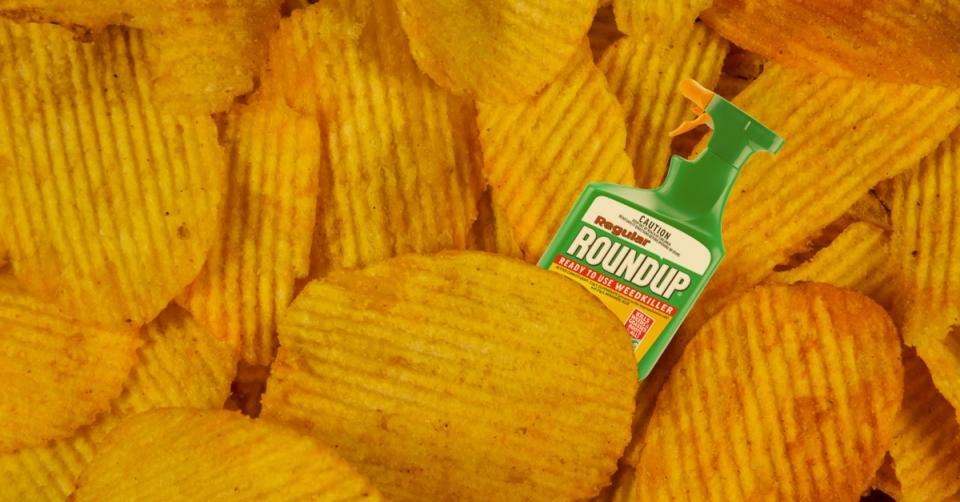
Around 150,000 tons of glyphosate weed killer are sprayed on farms, lawns and gardens in the US alone every year, and its use has escalated with the increase in genetically modified (GM) crops.
Around 93 percent of soybeans and 89 percent of corn grown in the US have been genetically engineered to be glyphosate-tolerant, or ‘Roundup ready,’ named after the most famous glyphosate weed killer.
Not surprisingly, glyphosate has been detected in the air we breathe, in drinking water and even in rainwater – and now in processed foods, such as snacks, crackers and breakfast cereals.
Researchers commissioned by the ‘real food’ lobby group, Food Democracy Now, tested a range of products on the shelves to discover just how much glyphosate they contained.
In the samples they collected, all of the 29 products tested had some glyphosate – from just 9.9 parts per billion (ppb) in a Trix bar to 1,125.3 ppb in Original Cheerios.1
Skeptics argue that one part per billion equates to one piece of toilet paper from a roll that stretches from New York to London – but it could still be enough to cause harm to people. Animal studies have shown that just 10 ppb of glyphosate can have a toxic effect on fish,2 and, at 700 ppb, glyphosate has similar effects on rats.3
The findings should be a wake-up call for Americans, says Food Democracy Now, which is calling for the ‘safe’ levels of glyphosate residues allowed in food to be slashed.
The Environmental Protection Agency considers it acceptable to consume 0.8 milligrams per pound of body weight per day, while in Europe, the acceptable level is just 0.15 mg per pound. But Food Democracy Now wants that upper limit set to just 0.01 mg per pound.
Glyphosate in processed foods:
The top 12 offenders
Researchers commissioned by the ‘real food’ lobby group, Food Democracy Now, tested 29 popular processed food products on sale in the US to find out how much glyphosate they contained (in parts per billion, or ppb). Here are the top 12 products with the highest glyphosate levels.


History of glyphosate
Glyphosate was patented in 1964 by Stauffer Chemical Company as a drain cleaner, designed to remove mineral deposits from metal pipes.
Monsanto’s John E. Franz discovered it had other properties, and by 1974 the company had launched it as “a non-selective, water soluble herbicide.” It worked by interrupting plant development through metabolic poisoning, which stopped the plant from feeding on nutrients such as iron, manganese, zinc and boron in the soil.
The most popular glyphosate weed killer is Monsanto’s own Roundup, sales of which surpassed $4.75 billion in 2015, but glyphosate is also found in more than 750 products, manufactured by about a hundred companies around the world.
In 2010, Monsanto won a patent to extend the action of glyphosate to also act as an antibiotic and an antimicrobial, which scientists fear could further impact human and animal health.

|
References |
|
|
1 |
Glyphosate: Unsafe on Any Plate. Food Democracy Now |
|
2 |
BMC Genomics, 2015; 16: 32 |
|
3 |
Environ Toxicol Pharmacol, 2012; 34: 811-18 |
What do you think? Start a conversation over on the... WDDTY Community